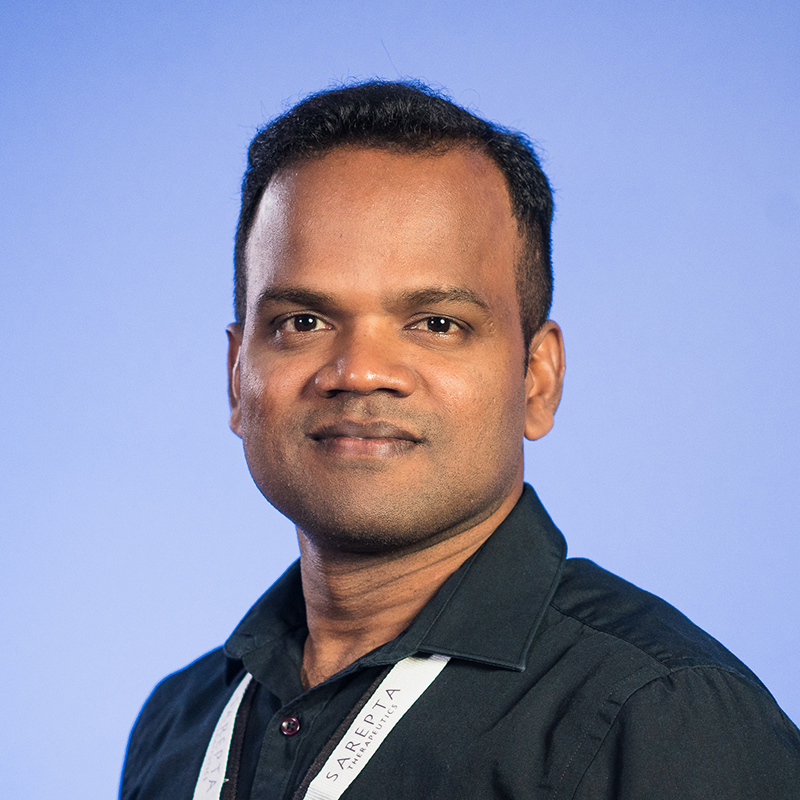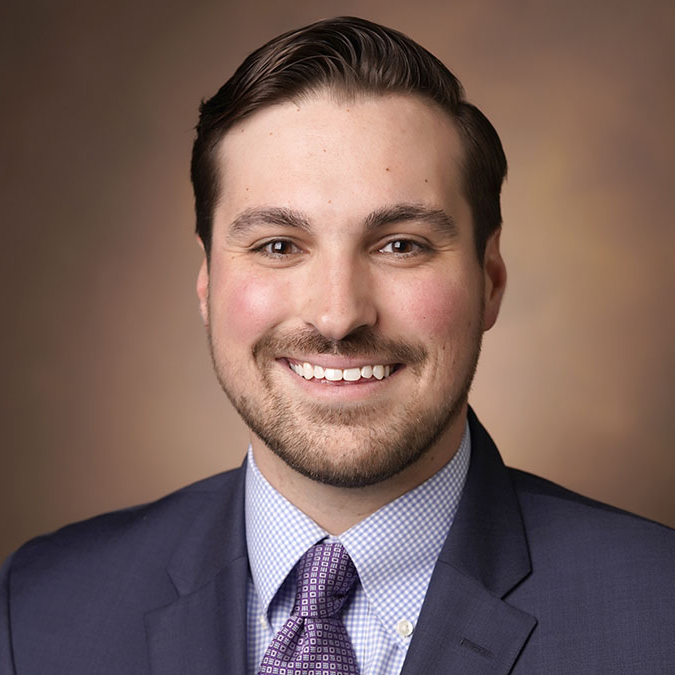Two researchers have been named Civitan Emerging Scholars for 2024-2025 by the Civitan International Research Center for neurodevelopmental disorders.
The Emerging Scholar Award provides research funding for clinical or basic science research related to brain development for trainees at the graduate student and postdoctoral fellow levels. Part of Civitan International Research Center's mission is to foster the next generation of scientists studying brain development. The Emerging Scholars Awards are made possible by donations from Civitan International, matching funds from the Foundation for Children with Intellectual and Developmental Disabilities, and UAB’s University-wide Interdisciplinary Research Centers (UWIRC) program.
Many fields of study are considered for the award, such as autism spectrum disorders, Down and Rett syndromes, developmental disabilities, impaired cognitive development, and the effects of environmental toxins on the development of the brain.
Muthukumar Karuppasamy, Ph.D., and Andrew Hale, M.D., Ph.D., have been selected for the 2024-2025 award cycle.
Studying drug therapy for a rare neuromuscular disorder
 Muthukumar Karuppasamy, Ph.D.Muthukumar Karuppasamy, Ph.D., a postdoctoral fellow in the Alexander Neuromuscular Disease Research Laboratory (lab of Matthew Alexander, Ph.D.), Department of Pediatrics, is investigating new uses for existing drugs to treat muscular dystrophies and autophagic vacuolar myopathies. Karuppasamy is interested in the generation and characterization of novel animal models for his research.
Muthukumar Karuppasamy, Ph.D.Muthukumar Karuppasamy, Ph.D., a postdoctoral fellow in the Alexander Neuromuscular Disease Research Laboratory (lab of Matthew Alexander, Ph.D.), Department of Pediatrics, is investigating new uses for existing drugs to treat muscular dystrophies and autophagic vacuolar myopathies. Karuppasamy is interested in the generation and characterization of novel animal models for his research.
As an Emerging Scholar, Karuppasamy will study a disease that impacts both the nerves and muscles. XMEA, X-linked myopathy with excessive autophagy, is an inherited and rare neuromuscular autophagic vacuolar myopathy. “XMEA is characterized by progressive proximal limb girdle weakness,” said Karuppasamy.
“XMEA is caused by pathogenic loss-of-function variants in the Vacuolar ATPase (V-ATPase) assembly factor VMA21 gene, and it predominantly affects males,” Karuppasamy explained. “The neuromuscular symptoms in XMEA patients occur between 5-10 years of age and get progressively worse over time.”
In this disorder, small structures called vacuoles, which are involved in breaking down and recycling cell parts, become filled with waste. This buildup disrupts normal muscle function, leading to muscle weakness and other related symptoms. “VMA21/XMEA mutations increase lysosomal pH and cause a defective cell debris degradation system.”
“Consequently, autophagolysosomes are impaired, and these autophagic vacuoles aggregate in the myofibers and other tissues resulting in the accumulation of cell debris in the tissues. The molecular consequences of VMA21 mutations on cardiac, respiratory, hepatic, and central nervous systems are unknown and no treatment currently exists,” he said.
Currently, no animal models exist for XMEA, thus posing a significant barrier to effective treatments.
When asked how his project components address gaps in research, Karuppasamy said there are two critical questions to address in this study.
a) How does dysregulated autophagy affect skeletal muscle and other key organs in XMEA patients?
b) Can autophagic antagonists ameliorate the detrimental effects caused by VMA21/XMEA mutations?
“Our preliminary drug repurposing screening revealed that autophagic antagonists showed promising corrective activities in vma21 zebrafish mutants. Also, we developed a Vma21 knock-in mutant mouse with patient-specific mutation. I will characterize the Vma21 KI/XMEA mouse model and test candidate drugs to study the molecular consequences of VMA21 mutations in key organs,” he said.
Additionally, Karuppasamy plans to “elucidate the mechanistic signalling pathway of candidate autophagic antagonist small molecules in the XMEA mouse model to examine the pharmacodynamic and pharmacokinetic profile of lead hits.”
The implications of this research will significantly be impactful to human health with regards to improving outcomes for neuromuscular disease patients with autophagic vacuolar myopathies (AVMs). "Knowledge gained from studying this rare neuromuscular disorder can be expanded to other childhood muscle diseases that have dysregulated autophagy as a symptom, including Duchenne Muscular Dystrophy, Pompe disease, and Danon's disease.”
Advancements in Hydrocephalus research
 Andrew T. Hale, M.D., Ph.D.Andrew T. Hale, M.D., Ph.D., a neurological surgery resident in the Department of Neurosurgery, has been recognized as a Civitan Emerging Scholar for his pioneering work in the field of Hydrocephalus (HC).
Andrew T. Hale, M.D., Ph.D.Andrew T. Hale, M.D., Ph.D., a neurological surgery resident in the Department of Neurosurgery, has been recognized as a Civitan Emerging Scholar for his pioneering work in the field of Hydrocephalus (HC).
HC is a condition caused by aberrant cerebrospinal fluid dynamics resulting in increased pressure. The condition can be genetic or acquired secondary to hemorrhage or infections, among other causes. HC can also lead to damage of brain tissue, causing a constellation of co-morbid neurologic disorders.
Hydrocephalus "is amongst the most common indication for brain surgery worldwide where development of effective pharmacologic treatments has been impeded by a lack of molecular and genetic understanding of the disease," says Hale.
However, a hopeful opportunity has recently surfaced. Induced pluripotent stem cells (iPSC) differentiated into small brain-like structures that are grown in lab dishes (i.e., cerebral organoids), are a new way to study the mechanisms of neurologic disease. Hale, alongside scientists and neurosurgeons at the University Cape Town Neuroscience Institute, University of Alabama at Birmingham, University of Cambridge, and Harvard, is hoping this technology may enable fundamental insights into HC disease mechanisms and potentially treatment.
As an Emerging Scholar, Hale’s study will aim to create the first-ever cerebral organoid model of HC, concentrating on creating models that reflect African ancestries, where HC is most prevalent.
By generating cerebral organoids models of genetic and acquired HC, Hale and his team are poised to define the mechanisms underlying the disease.
Driven by his dedication to pediatric neurosurgery, Hale chose to train at UAB “because of the diverse, high-volume clinical practice, excellence in basic/translational sciences, and particularly strong clinical training in pediatric neurosurgery.”
Hale also notes that “nearly 25% of pediatric neurosurgeons in the U.S. have trained at or been trained by graduates of UAB, including many departmental and national leaders.”
“Complementary to this, UAB is a leader in genomics and informatics, relevant to my specific scientific interests and background.”
In addition, UAB has a remarkable history of international collaboration and support of trainees pursuing international training opportunities, Hale says, making it the perfect place to pursue promising studies.